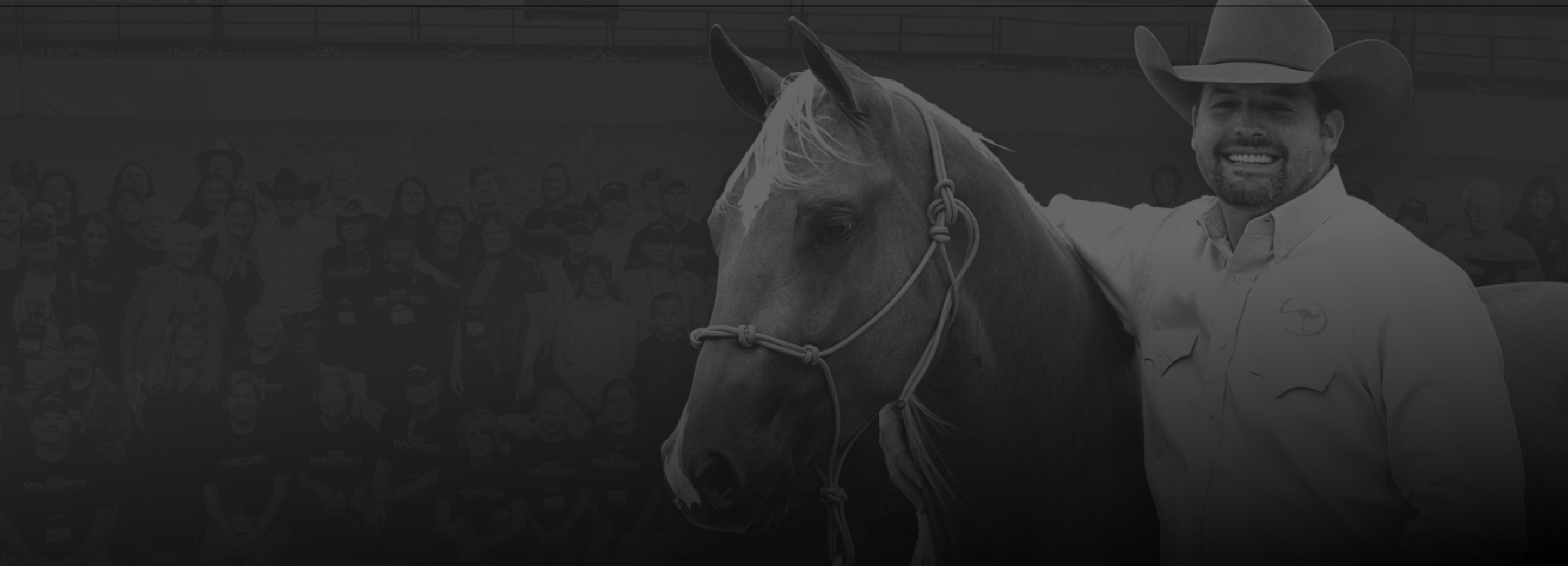Kicking a Bad Habit
Clinton Anderson from Downunder Horsemanship has a partnership with horses that we don’t see every day. While he understands that they’re beautiful creatures filled with grace, strength, and athleticism, he also understands that at times they can be dangerous. Horses don’t realize how big and strong they are and if you don’t have your horse’s respect, this turns into a dangerous situation such as a kicking horse habit. Clinton works with clients to help them gain their horse’s respect so they can develop a safe, healthy partnership. He tackles some of the most challenging situations with problem horses and with problem owners. In this week’s episode, Clinton works with Cindy Love Eichler and her horse Blue to address Blue’s incessant issue of kicking.

Blue started his horse kicking habit when he was about 3 years old and regardless of how hard Cindy tries to work around it, it just continues to get worse and worse. She’s found it increasingly difficult to address the issue and has already been kicked twice. Clinton steps in with the Downunder Horsemanship Method to help get Blue back under control.
He starts by introducing groundwork exercises to Blue, completely ignoring the gelding’s leg-handling issue. Clinton’s first goal is to diminish Blue’s level of fear and gain his respect. This establishes a starting point, a communication point, between Clinton and Blue so that they can then move towards Blue’s feet and work on his issues safely. When Blue responds correctly to Clinton’s cues, Clinton gives rewards him and praises him to show him that he’s doing a good job.
Clinton continues the training session by showing Cindy how she can safely work on Blue’s issues. He teaches her how to desensitize the gelding to the stick and string spanking the ground. He has her shorten the lead rope, spank the ground in a circular motion, and repeat. The exercise gets Blue to relax and stop being afraid of everything happening around him. Clinton reminds Cindy that nothing good comes from sneaking around your horse and the more you protect your horse, the spookier and more reactive the horse will become.
After Blue’s been desensitized, Clinton moves on to gaining control of his hindquarters with the Fundamentals level exercise “Yield the Hindquarters Stage One.” By moving Blue’s feet, Clinton explains that two things will happen. First, he’s going to get Blue’s respect. Second, he’s going to get him to start using the thinking side of his brain instead of the reactive side. This is accomplished by simply asking Blue to yield his hindquarters, and when he steps correctly, immediately rubbing him for as a reward for good behavior. Then Clinton moves on to “Lunging for Respect Stage Two.” In this stage of the exercise, Clinton sends Blue around him and has him stop and turn in to face him and then pivot on his hindquarters and go off in the new direction. He’s looking for Blue to do a crisp rollback, which comes naturally to Blue since he’s a cutting horse. The exercise reinforces to Blue that constant motion is a lot harder work than standing still and relaxing. After moving Blue’s feet and gaining his respect and trust, Clinton starts to desensitize Blue to having his hind legs touched and rubbed. Blue’s defensiveness about his feet being handled means Clinton needs to take things slow. When Blue stands quietly while Clinton rubs his hind legs, he progresses to cueing Blue to pick his legs up.
Clinton explains that whenever Blue misbehaves, it is crucial to go immediately back to moving his feet again with high energy to show Blue that if he kicks out, he’s going to be put to work. After hustling Blue’s feet, Clinton straight back to rubbing and picking up the gelding’s hind legs. Anytime Blue misbehaves, Clinton repeats the process. This is where the learning happens.
By the end of the training session with Clinton, Blue is comfortable with having his legs handled. However, Cindy will need to continue to work with Blue if she wants this behavior to stick and keep improving. Blue is still a very vulnerable horse and without repetition and ongoing training, he’ll go back to his old ways of kicking out. Consistency is your greatest ally when training a horse and inconsistency is your greatest enemy. Remember, all problems come from a lack of respect or fear. When you earn your horse’s respect and eliminate any fear, your problems will disappear.
If you’re interested in learning more about the Clinton Anderson training method, or any of the products featured on today’s show, check out his website and browse the ultimate collection of kits.




